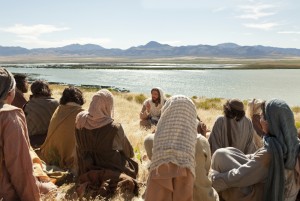By S. Kent Brown
The very real similarities between the Sermon on the Mount (Matthew 5–7) and the Sermon on the Plain (Luke 6:20–49) have led many students of the New Testament to see these two magnificent sermons as variants of one another. And because the Risen Christ repeats the Sermon on the Mount almost verbatim in 3 Nephi 12–14, we tend to prefer this sermon over the Sermon on the Plain when studying the teachings of Jesus. And well we should because the Sermon on the Mount contains a much fuller body of Jesus’ instructions.
This said, I suggest that we consider two possibilities. First, Jesus gave the two sermons on different occasions and, second, Jesus’ rehearsal of the Sermon on the Plain was partially to introduce the Twelve to his growing number of followers.
One main reason for seeing the two sermons as separate events has to do with their settings. According to Matthew, when “seeing the multitudes, [Jesus] went up into a mountain.” In our minds’ eye, we can readily imagine Jesus climbing the broad hillside that rises above the north shore of the Sea of Galilee and, after “he was set, his disciples came unto him” (Matthew 5:1). Luke describes a completely different setting. He relates that, after Jesus chooses the Twelve following all night in prayer on “a mountain” (Luke 6:12), “he came down with them [the Twelve], and stood in the plain” (Luke 6:17). In the hills that ring the Sea of Galilee on the east, north, and west sides, a single area stands out as an extensive level area that matches Luke’s sketch.

It lies on the northeast shore about three miles west of Capernaum and stretches away from the lake for about a mile before abutting high hills. It is called the Valley of Ginosar. This place becomes all the more attractive when we notice that in the assembled crowd were people “from the sea coast of Tyre and Sidon, which came to hear him” (Luke 6:17). Clearly, by the time that Jesus delivers his Sermon on the Plain, people have heard about him from far away and are already coming to listen to him, a sense that we do not get from Matthew’s account because what Luke relates evidently comes later in Jesus’ ministry. The access road for these people from the northwest was through the Arbel Pass that leads down from Upper Galilee and brings travelers onto the flat area of the Valley of Ginosar. Hence, the details in Luke’s report point to a real place near the Sea of Galilee.
Let’s turn now to the Twelve. After healing the man with the withered hand, the Savior “went out into a mountain to pray” (Luke 6:12). The next day “he came down” in the company of the Twelve, having called them, and “stood in the plain” (Luke 6:17). In a visual sense, Jesus’ withdrawal, ascent, and descent announce the Twelve to the gathered multitude. These actions also implicitly signal to the crowd the formal organization of his new community, destined to replace the old, soon after uttering the parables about the “new” and “old” (Luke 5:36–39). Further, the highly visible presence of the Twelve at the following events—the healings (Luke 6:18–19) and the sermon (6:20–49)—reinforces Jesus’ more or less formal introduction of them to the assembled crowd. In addition, the phrase with him points to the rich fellowship that now begins to develop between these men and the Savior (Luke 6:17). As a gauge of the apostles’ importance in Luke’s narrative, we note that he mentions them six times in his gospel and twenty-eight times in the book of Acts whereas Matthew and Mark each mention them once (see Matthew 10:2; Mark 6:30).
A further dimension rests on this scene. Jesus’ descent faintly echoes the descent of Jehovah onto the holy mount to announce the law (Exodus 19:18–20) and Moses’ descent to prepare his people to receive the law (Exodus 19:25). In addition, one senses on the edge of this language the descent of the divine presence, the so-called Shekinah, among the people of God which seems to be confirmed by the testimony in Luke 7:16—“God hath visited his people.” This idea also lies in the promise, “ye shall see . . . the angels of God ascending and descending upon the Son of Man” (John 1:51). Further, the verb translated “came down” (Greek katabainō; Luke 6:17) describes the descent of the Spirit at Jesus’ baptism (Luke 3:22; John 1:32–33) and his descent from the Mount of Transfiguration (Matthew 17:9; Mark 9:14).
—Based on The Testimony of Luke by S. Kent Brown, an e-volume in the BYU New Testament Commentary Series (see byuntc.com).

